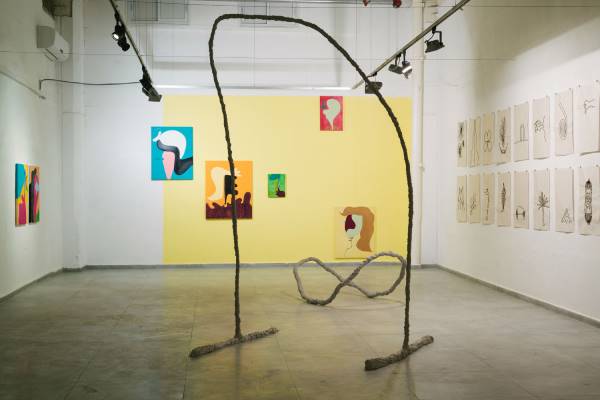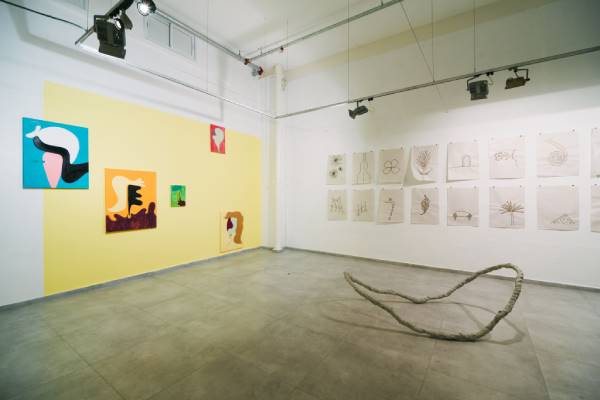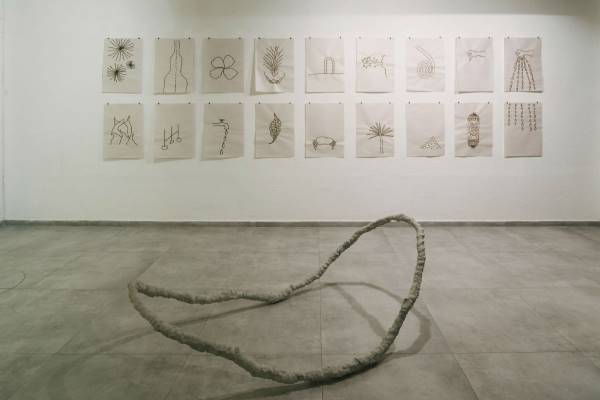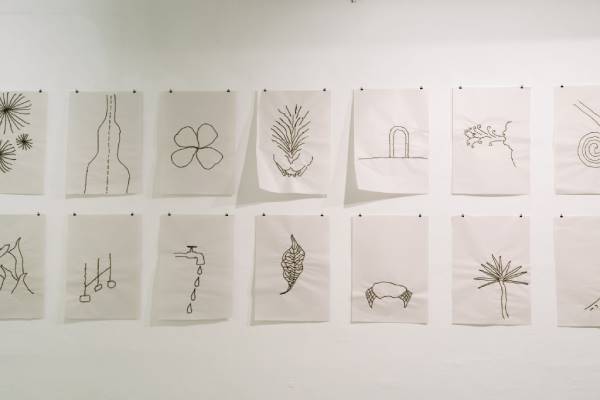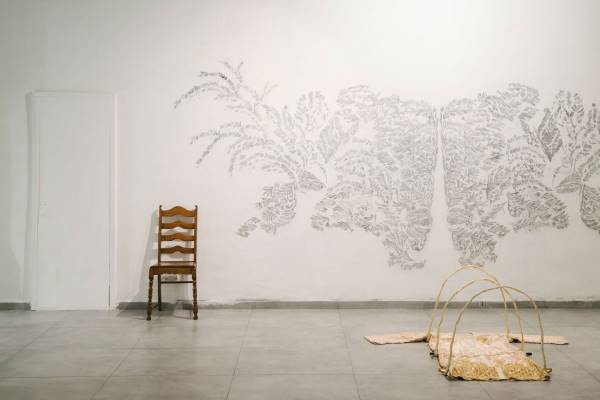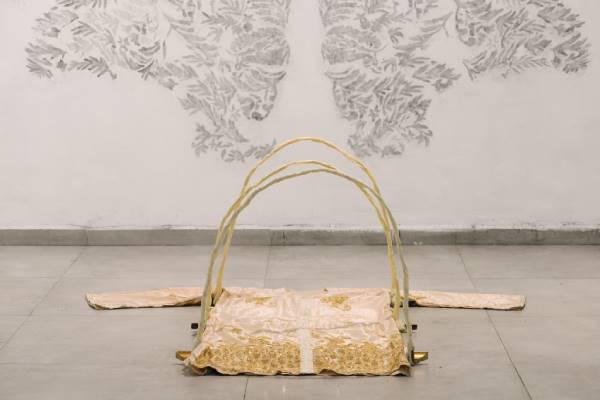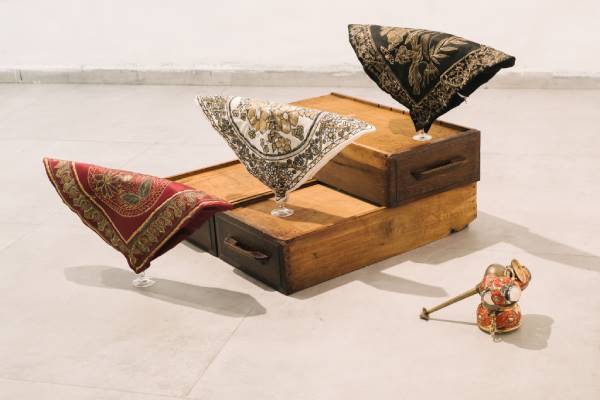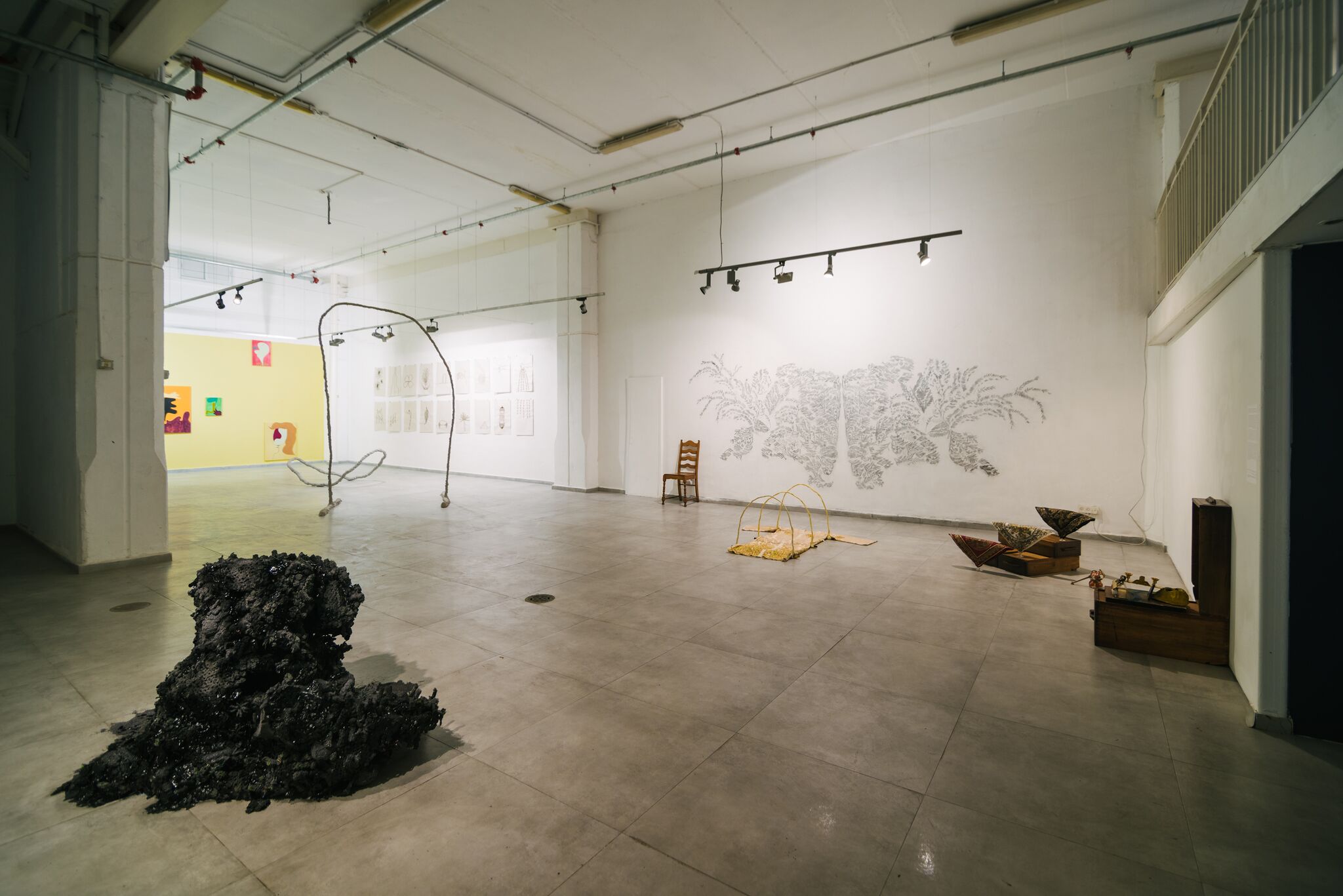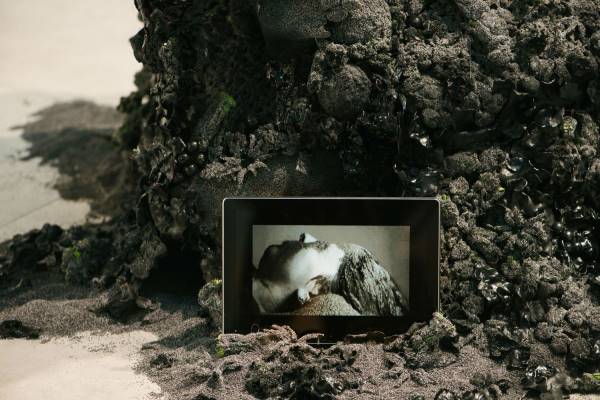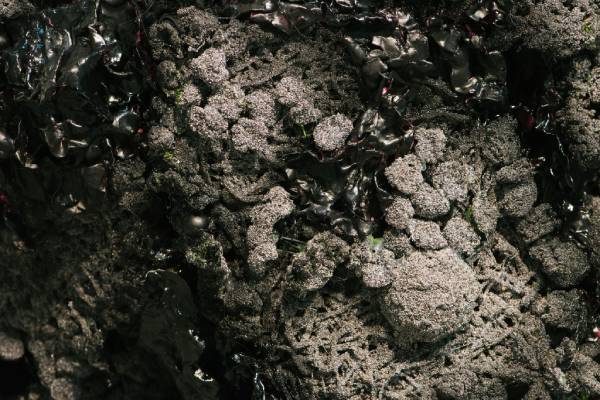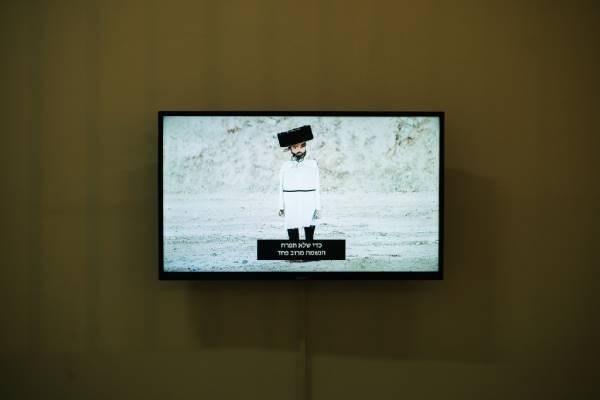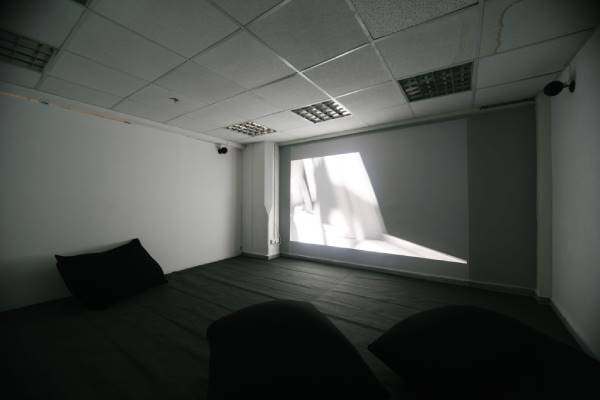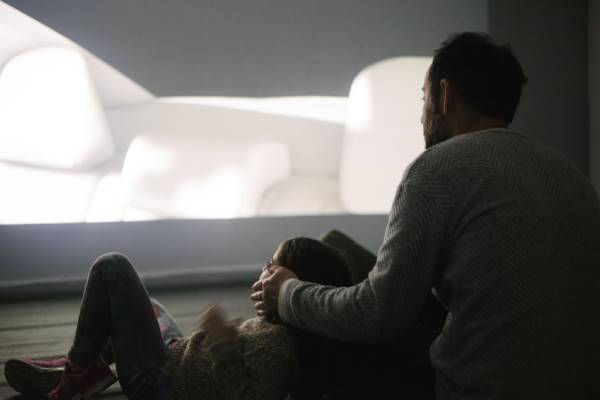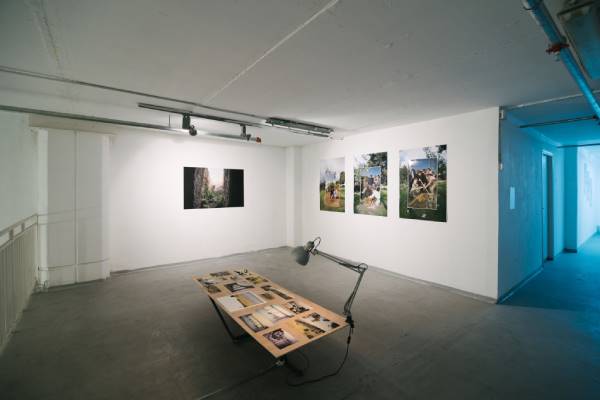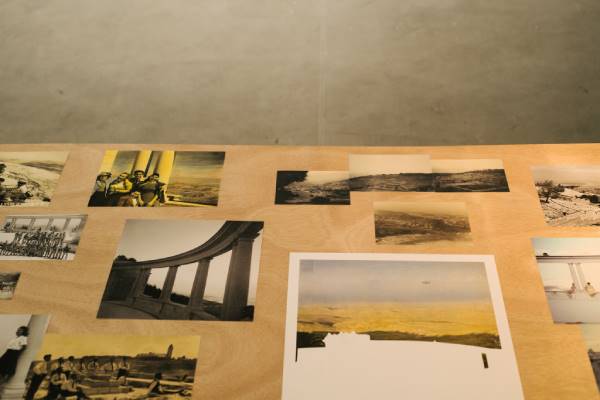Bikurim
Renana Aldor, Aniam Dery, Yoav Fisch, Adva Goldstone, Tohar Lev Jacobson, Polina Kitainik, Shabtai Pinchevsky
March 16–May 4, 2018
New Gallery, Artists' Studios Teddy, Jerusalem
Is a unique biannual project aimed at encouraging young artists working in Jerusalem. ‘Bikkurim’ are the first fruit offerings of the first produce, often associated with new beginnings in Judaism. The project was initiated by the New Gallery, Artists' Studios Teddy, on behalf of the Jerusalem Municipality's Plastic Arts Department. It offers artists curatorial support and participation in a group exhibition of active artists, recent graduates of the city's various art schools, who decided to make Jerusalem their home after completing their studies. The first round of Bikkurim exhibits works by seven young artists who have recently graduated from the plastic arts, photography, and digital media departments in the city. Professional considerations determined the artists selected for the exhibition, while residency in Jerusalem was mandatory. Each artist received professional and financial support to create a new work - presented at the exhibition for the first time - which reflects the artist's fields of interest and artistic creation.
Yoav Fisch, Review, 2018, Installation, concrete, iron, concrete drawings on paper
http://www.yoavfisch.com/
In his installation utilizing sculpture and drawing, Yoav Fisch examines the relationship between the two and three dimensional. This is done through evoking a series of mundane graphic images: an archway, boat, drop, hand, spiral, heart, clover and more.
The images appear on newsprint and form a variety of compositions - vibrant cement drawings creating an idiosyncratic lexicon of signs. Beside them are two monumental sculptural objects the artist created by applying layers of concrete with his bare hands. Despite the difference in appearance and technique, the series of drawings and the pair of sculptures demonstrate a unified aesthetic language; minor and reductive in
nature. The nature of concrete, typically used for construction, is challenged by being reduced to a thin line in space, fragile and vulnerable.
The archway an architectonic element capable of holding a substantial amount of weight, is deprived of its functionality. The boat, unnaturally set on the ground, is stripped of its balance. These images seem to portray internal organs or otherwise a pre-existing structure, echoing the accumulation of images in the drawings like short stories recounting the limits of the human body.
Adva Goldstone, The Bridegroom, 2018, painting installation, acrylic and marker pens on canvad, acrylic and wall paint
https://www.advagoldstone.com/
Adva Goldstone's painting installation offers a re-examination of the medium of painting from a personal and spatial interpretative perspective. Mounted on a pastel-colored monumental wall are different formats of painting canvases, with scribbled monochromatic paint in an abstract graphical language in between them. The color of the base that surrounds the wall does not function as a platform for painting, but rather serves as an agent, melting together the entire ensemble of images to form a complete, hermetical compositional array. The collection of paintings on the canvas demonstrates a fundamentally uniform repertory based on the portrait genre, which is schematically diminished, reduced into local flat surfaces of color and outlines that delineate amorphous forms. Despite their abstractness, the forms maintain an echo of the first impression that served as their source of inspiration. The bright colors and seductiveness that dominate the work, alongside the caricatural element of the images, stress the free and humorous nature of the installation, which avoids any toffee-nosed pretention often related to the painting medium, despite its monumental dimensions. The unrestrained experimentation of lines and colors continues a painting tradition, which favors the act of flattening over the three-dimensional illusion, in order to emphasize the ornamentalaesthetic aspect of the medium of painting.
Aniam Dery, "Wait for me beloved, while I dress", 2018, plaster, masking tape, found objects, graphite, photography and sound
http://aniamd.weebly.com/
The impressions and materials that motivate Aniam Dery's work draw on aspects of her private world: dreams, memories, and personal experiences, which she processes intuitively and associatively, by implementing game-like methods of disassembly and reassembly. These methods are realized in various artistic products and media, including drawing, sculpture, and sound. The installation compiles a multiplicity of seemingly context-less elements, which form an improvised surrounding, a kind of 'backyard' of the mind. Some of the elements have been melded together to form bubbling emotional hybrids, compounds of memory-charged objects selected from the private and family spheres, which found their way into her artworks. The abundance of items, which seem to have been compiled offhandedly, functions as various autonomous units that encode a personal story. Nevertheless, fragments of signs and information rise from within the visual language that materializes in this abundance. These fragments divide into distinct cultural groups; for example, an ornamental-vegetational wall drawing which echoes the embroidery patterns typical of the cloaks worn by the chief Sephardi rabbis. The personal-intimate dimension is hence interwoven into
representations of an out-of-mind world and of a social existence, that join together to create a single narrative, as the unpredictable links between objects
(*) The title of the work is taken from a Wedding song in the Haquetia language (the Judeo-Spanish dialect used by Moroccan Jews; No`am Bar`am- Ben Yossef, The Jewish Wardrobe from the Collection of the Israel Museum, Israel Museum, Jerusalem, 2014)
Polina Kitainik, Anthozoa (Living Flower), 2018, installation, artificial plants, glue, puppy seeds, video (loop, 01:56 min.)
Polina Kityanik examines in her installation sleep as an intermediary state where the rationale, consciousness, and self-control recede, making room for a subconscious world of unmediated inclinations that surface from the dreaming mechanism. This is a state of release but also of anxiety, as it summons death into life. As if in a mixture of dream and reality, Kityanik draws an arena of a dark and disturbing occurrence revolving around a sculptural array that simulates an entangled organic environment, a kind of spreading vegetation, infected and ominous, threatening to take over the gallery space. A fragmentary cinematic frame that emerges from this array unveils a body-less head, a kind of enigmatic mask of death that is slowly covered in a cloak of pouring poppy seeds. The seeds slide down the curves of the portrait and accumulate in the face's orbital, nasal, and oral apertures to create a threatening image of helplessness, decay, and death. Like the portrait, the surrounding vegetation is also covered in a layer of poppy seeds, which puts to death what is already dead. However, paradoxically, the poppy layer is what casts upon the artificial vegetation its organic qualities. The poppy's seizure of the artwork thus has a double value; it destroys and brings death but also embalms and preserves - as if it were freezing a moment in eternity.
Renana Aldor, Blind Spot, 2018, video and animation, 6:00 min. https://renanaaldor.com/ Her work presents a journey of self-discovery in three metaphorical episodes that establish the artistic self. Like the mirror stage in psychoanalytic theory, in which infants recognize their physical independence after seeing their reflection in the mirror, the artist establishes herself by addressing three genres in classical art - portrait, still life, and landscape - which take place inside the unconscious. The frame emerges from the darkness, lingering and investigating, in order to meet its subject - first the artist sitting motionless on a simple wooden chair; then a detailed collection of still life painted entirely white, resting upon a table; and ultimately a three-dimensional animated car model that hides the typography of a landscape inside. The movement of the camera is repeated in each episode - it curiously scans the object, then zooms in and lingers attentively, and finally moves on, disappearing into the suffocating darkness , only to emerge once more and scan the next subject in the same fashion, in an eternal loop. The movement of the camera, which dives slowly into the depths of the frame and back out - approaching the scene and turning away from it - bestows upon this occurrence a dream-like dimension, which intensifies the sense that the images before us are merely reflections in the artist's pupils, and not part of an exterior autonomous reality. This process intensifies the surreal experience that encompasses the work, which cycles between the tangible dimension and a calculated, artificial reality inside a misleading illusory atmosphere.
Photography and Lighting: Tomer Zmora; Compositing and Animation: Or Drori; Sound Design: Dan Kisler, Gal Hochberg.
Shabtai Pinchevsky, Landscape in Continuum, 2018, Installation, photographs, maps, photographic collage archive based.
http://www.taishabtai.com/
Shabtai Pinchevsky's research subject in the installation Landscape in Continuum is a portion of land that resides between Isawiya and Abu Tor in East Jerusalem; unappropriated territory at the heart of a controversy between official authorities that seek to turn it into a national park - the Jerusalem Municipality, the Nature and Parks Authority, the Ministry of Interior, and the Ministry of Environmental Protection - and activists, politicians, urban planners, and residents of the area who wish to prevent this plan from being realized. They claim that the alleged environmental justification for the 'Mount Scopus National Park' project in fact hinges on political agendas, which aim to limit the spreading of the surrounding Palestinian neighborhoods.
The land in question, serene and peaceful-looking, stretches down the hillside of the Hebrew University campus on Mount Scopus, and has acquired an iconic quality since the campus's inauguration. This is also the landscape that Pinchevsky saw every day during his studies at Bezalel. He currently seeks to follow this piece of land and understand what it means to observe it, realizing that landscape is a product of perspective and cultural structuring, and not only of architectonic plans and geographical outlines. The landscape's repeated appearance in the photographs, maps and archive-based photo collages, creates a space of accumulative abundance, as a kind of gathering of evidence in attempts to decipher the significance of the place.
Tohar Lev Jacobson, Woe is me for I have been silent, 2018, single-channel video, 6:30 min.
http://www.toharlev.com/
Tohar Jacobson continues to address questions of ultraorthodox society, this time by means of poor-looking dolls, which are a part of the theatrical inventory common in the ultraorthodox world. The stage, which allows for the dramatization of biblical scenes and everyday social moods without the use of actual actors, appears in festive events in the ultraorthodox community as popular entertainment of a didactical value. The artist hence segregates bride and groom figures from their original mise-en-scène and positions them in a neglected construction site, far away from the glory of the most climactic moment of their lives. Silent and anticipating, they thus engage in a dialogue, in which the groom tells his bride jokes from the Jewish world.
In spite of the prohibition on making a mask or statue, these dolls enable the artist to form a simulacrum of the tangible and conceptual space by virtue of their small dimensions and sloppy appearance. The poor quality turns them into a canister, a neutral medium for conveying theological content that cannot possibly compete with the subject of its own mimicry. However, the feebleness of the dolls is what enables them to express a fundamental existential agony, as if they have collapsed under the illustrative burden that had been forced on them. The eternal waiting in the abandoned landscape raises fatalistic thoughts on the
futility of man and induces associations of exile and wandering, as if the dolls were a post-apocalyptic remnant of an extinct human civilization.

